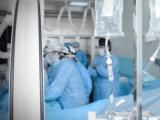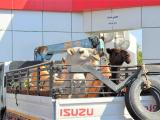New findings from an investigation into a large MERS-CoV cluster in a women's dormitory revealed that crowded living conditions can lead to higher attack rates and hints that even healthcare workers who don't directly care for patients can play a role in disease spread.
In other developments, Saudi Arabia reported one new MERS-CoV (Middle East respiratory syndrome coronavirus) case.
Transmission patterns, possible exposure
The dormitory cluster occurred in Riyadh from November 2015 to January 2016, resulting in 19 confirmed infections. Investigators from the Pasteur Institute, Saudi Arabia, and the University of Hong Kong reported their findings today in Emerging Infectious Diseases.
The women-only dorm in Riyadh is made up of 24 villas with poor ventilation with shared kitchen and dining space, and residents often gathered around laptops to watch movies. The villas housed 828 women ages 26 to 41, all of them expatriates and most of them from the Philippines.
The first patient worked as a janitor in a women-only university in Riyadh. After her illness was diagnosed in early November, contact tracing identified 18 more cases. Seventeen of the MERS patients in the cluster also worked at the university, and many of them worked in one of four hospitals as their main or second job.
Ten of the 24 villas were affected to varying degrees. Researchers found that the overall attack rate in the dormitory outbreak, at 2.3%, was similar to an earlier household contact study. However, though the attack rate in some of the dormitory villas was low, that of other villas was high, as much as 35.3% in one, where 12 women were infected and 10 reported symptoms. The team said the high rate in that villa was probably due to exceptionally crowded living and sleeping conditions.
Independent risk factors were direct contact and sharing a bedroom with a MERS-CoV patient, and increased human-to-human transmission probably related to the clustering of the women's activities—the same groups typically ate, socialized, worked, and traveled together.
The researchers weren't able to pinpoint the source of the outbreak, but they said two of the patients worked primarily as cleaners at the same hospital in Riyadh, and three others had second jobs at cleaners at two other hospitals. They estimate that one of the women was exposed to MERS-Cov while working as a cleaner in a hospital in which undiagnosed MERS-CoV patients had received care.
Two months earlier, the hospital where two of the women had their primary jobs experienced a small cluster of cases, and the authors said that, based on the timing of cases, some workers at that hospital may have had subclinical infections.
Rapid contact tracing, isolation, and investigation was probably responsible for a quick end to the dormitory outbreak, the team wrote.
The study suggests that hospital workers such as cleaners, who aren't directly responsible for patient care, could play a role in the spread of MERS-CoV, the group wrote. And the researchers note that efforts to improve infection prevention and control training may miss cleaning staff, who may be from other countries and speak different languages.
New case, snapshot of July illnesses
The latest MERS-CoV case in Saudi Arabia involves a 49-year-old woman from the city of Al Khurma in Taif region, located in the west central part of the country. An investigation found she had contact with camels, and the source of her infection is listed as primary, meaning she probably wasn't exposed to another known patient.
The case is Saudi Arabia's third in August.
In other developments, the World Health Organization Eastern Mediterranean Regional Office (WHO EMRO) recently posted its latest monthly snapshot of MERS-CoV cases, which covers nine Saudi cases reported in July.
Three of the patients died from their infections, and two had symptom onsets in June.
No clusters were reported, and one patient had a history of contact with camels and had consumed raw camel milk. Investigations are still under way into how the other patients were exposed.
As of the end of July, the global MERS-CoV total was 2,468, with at least 848 related deaths, WHO EMRO said. The vast majority of the infections have been in Saudi Arabia.
See also:
Aug 19 Emerg Infect Dis study
Aug 13 Saudi MOH report
WHO EMRO MERS situation update for July


















